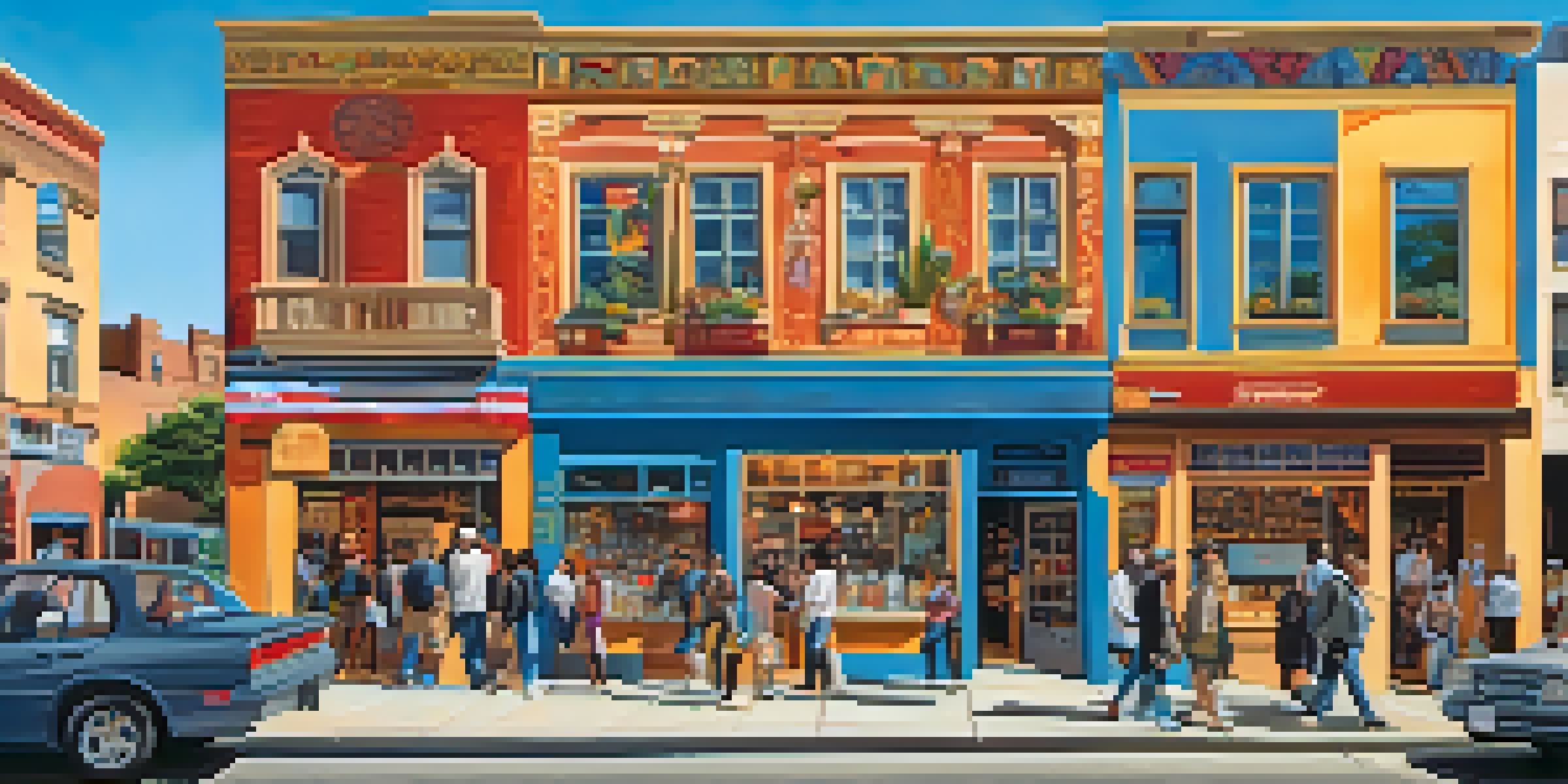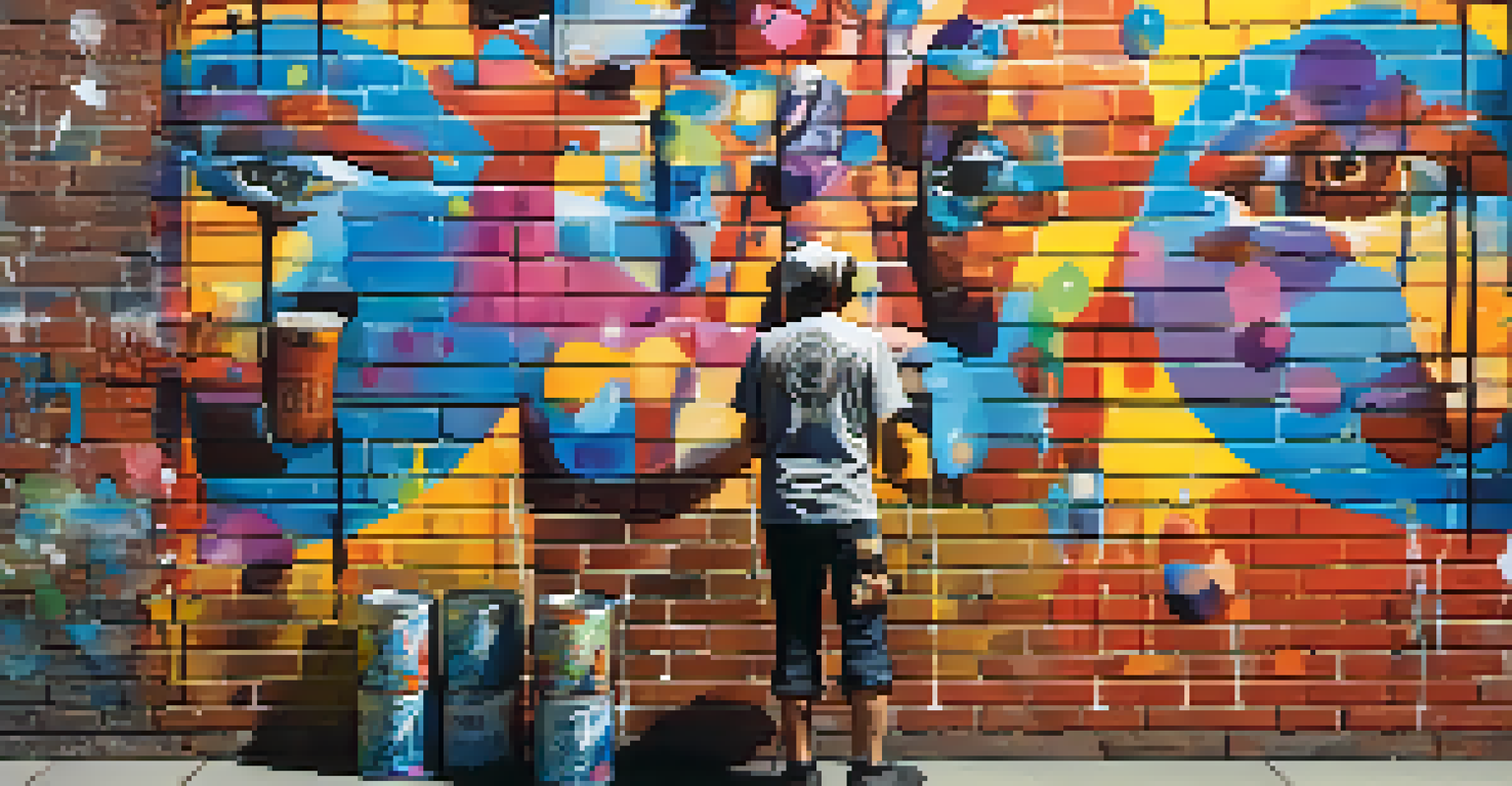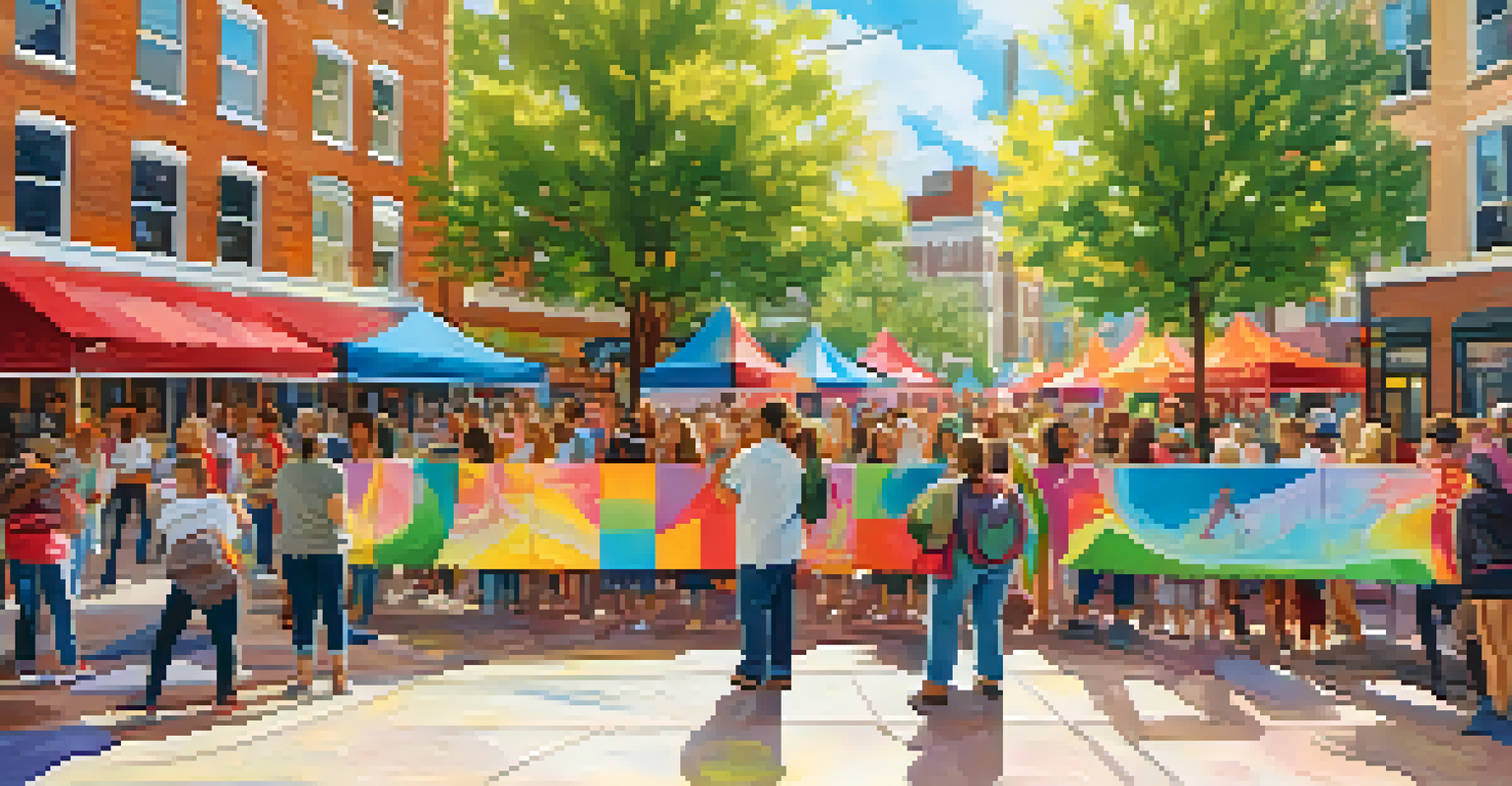Street Art's Role in Urban Revitalization Projects

Understanding Urban Revitalization and Its Challenges
Urban revitalization refers to the process of improving neglected city areas, aiming to boost economic growth and enhance livability. This often involves addressing social issues, infrastructure decay, and environmental concerns. However, these projects can face resistance from locals who feel disconnected from the planning process or fear gentrification.
Art is the most beautiful of all lies.
Revitalization efforts typically require a delicate balance between development and preserving the community's character. Without local engagement, projects may overlook the unique needs and identities of the neighborhoods they aim to uplift. Hence, finding innovative ways to involve residents is crucial for success.
Street art plays a vital role here by creating a platform for local voices, allowing communities to express their identity and aspirations. When art reflects a community's stories, it fosters a sense of ownership and belonging, which is essential in revitalization.
The Power of Street Art in Shaping Community Identity
Street art is more than just colorful murals and graffiti; it's a powerful medium for storytelling. Artists often draw inspiration from local culture, history, and current events, making their work relatable and meaningful to the community. This connection helps to establish a shared identity among residents.

When a neighborhood embraces street art, it can transform public spaces into vibrant galleries that celebrate diversity and creativity. For example, areas like Wynwood Walls in Miami have become iconic, attracting tourists and locals alike, which boosts local businesses and community pride.
Street Art Boosts Community Identity
Street art fosters a shared identity among residents by reflecting local culture and stories.
Moreover, street art can challenge societal norms and provoke thought, encouraging dialogue around important issues. This engagement can unify residents, prompting them to collaborate on further community improvement initiatives.
Boosting Local Economy Through Street Art
Incorporating street art into urban revitalization can have significant economic benefits. Vibrant artworks attract visitors, which can lead to increased foot traffic in local businesses. This influx can help stimulate the economy, providing a boost to shops, cafes, and other enterprises in the area.
Every act of creation is first an act of destruction.
Additionally, unique street art can enhance property values as neighborhoods become more desirable. People are often willing to pay a premium to live in areas known for their artistic appeal, which can lead to investment in further community improvements, creating a cycle of growth.
Cities that embrace street art often see a transformation in their image, presenting themselves as dynamic, creative spaces. This shift can attract new residents and businesses looking for a distinctive urban experience, further fueling economic revitalization.
Collaborative Projects: Artists and Community Engagement
Successful revitalization projects often involve collaboration between artists and community members. By engaging locals in the creative process, artists can ensure their work resonates with the community. Workshops and brainstorming sessions can yield ideas that reflect the area’s unique characteristics and challenges.
Such collaborations foster a sense of pride and ownership among residents, as they see their contributions reflected in the art. This engagement helps to strengthen bonds within the community, creating connections among diverse groups. When people feel involved, they are more likely to support ongoing revitalization efforts.
Economic Growth Through Art
Incorporating street art into urban spaces attracts visitors, boosting local businesses and property values.
For instance, initiatives like the Mural Arts Program in Philadelphia actively promote community involvement, resulting in murals that not only beautify neighborhoods but also tell powerful local stories. These projects demonstrate the potential of art to unite and inspire communities in their revitalization journey.
Street Art as a Tool for Social Change
Street art often serves as a platform for social commentary, raising awareness about pressing issues like inequality, violence, and environmental concerns. Artists use their work to challenge the status quo, sparking conversations that can lead to meaningful change within communities. This ability to provoke thought can be a catalyst for action.
By addressing social issues through art, communities can mobilize around common goals, fostering solidarity and collaboration. When residents see their struggles reflected in public art, it can inspire them to advocate for their needs and push for improvements in their neighborhoods.
Moreover, street art can help to humanize and give voice to marginalized groups, allowing them to share their narratives. This inclusivity is essential in fostering a sense of community, ensuring that everyone feels represented and heard in the revitalization process.
Preserving Cultural Heritage Through Street Art
Urban revitalization often presents the challenge of balancing progress with cultural preservation. Street art can play a vital role in honoring and maintaining a community's heritage, ensuring that historical narratives are not lost amid new developments. Murals can depict local legends, historical figures, and cultural symbols, reminding residents of their roots.
In many cases, artists collaborate with historians and community leaders to create works that celebrate local culture. This not only beautifies spaces but also educates residents and visitors about the area’s history. For instance, murals depicting indigenous heritage can foster respect and understanding of the community's background.
Art as a Catalyst for Social Change
Street art raises awareness of social issues and encourages community mobilization for meaningful change.
By highlighting cultural narratives through art, communities can strengthen their identity and pride. This connection to heritage is essential for fostering a sense of continuity as neighborhoods evolve, ensuring that revitalization efforts do not erase the past but rather build upon it.
The Future of Street Art in Urban Revitalization
As cities continue to evolve, the role of street art in urban revitalization will likely expand. The growing acceptance of art as a legitimate form of expression in public spaces reflects a shift in how communities view their environments. This evolving perspective opens doors for further artistic collaboration and innovation.
Emerging technologies, such as augmented reality, could enhance street art experiences, allowing for interactive elements that engage the public in new ways. These advancements may attract even more visitors, further integrating art into the fabric of urban life and revitalization efforts.

Ultimately, the future of street art in urban revitalization lies in its ability to adapt and respond to community needs. As cities strive for sustainability and inclusivity, street art can continue to be a vital tool for expressing collective identity and driving positive change.